Setting Up A Perfect Balance And Hierarchy Between Home Decor And Furnishing
Home decor is a personal and one-of-a-kind way to create stylized interiors. Wall colors, furnishings, and accessories woven around themes that reflect your preferences and personality give each room a distinct personality. The basic tenet for perfect home decor is, of course, your comfort level with a particular style; the result reflects your individuality and organization.
Nowadays, you can get plenty of items in the market, which reflect various themes – right from color to accessories. For a traditional style, you get warm wall colors, exotic beautifully carved wooden furniture, elegant artwork, etc. And if you are planning for modern-style home décor, you have bright shades that you can easily mix & match and luxurious furniture.
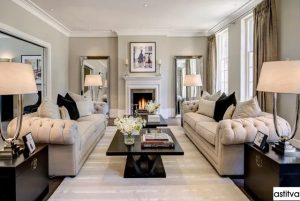
The market is full of home interior accessories. What you have to decide is just the style and theme for your dream home. While decorating a house, space planning with due regard to windows, doors, and furniture is very essential. The lighting of an area is of the highest importance. It’s high time to create a perfect balance between home decor and furnishing.
While maintaining your style, keep in mind the important interior design elements of dimension, balance, rhythm, harmony, contrast, and pattern. Naturally, everyone has his or her style. Some people prefer a more traditional and classical look, while others prefer the most recent trends. Some people prefer Italian home decor, while others prefer rustic home decor.
Types of Home Decor
The primary home designs that most interior designers follow are rustic home decor, casual home decor, contemporary look, and formal decor.
A rustic look adds a classy touch to any home decor. The furniture is made of natural wood. Add a few accessories such as cushions and rugs. Paintings of landscapes and rugs with curved edges (oval or circular) add to the rustic look. Wrought iron accessories can be used.
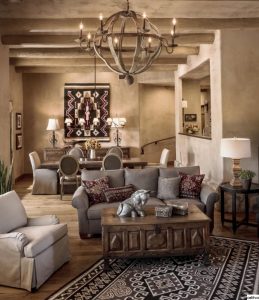
Casual home decor is both stylish and comfortable. The casual decor is characterized by simple items such as wooden or leather furniture, a center table, wooden flooring, and warm wall colors such as rust or peach with a touch of gold or copper.
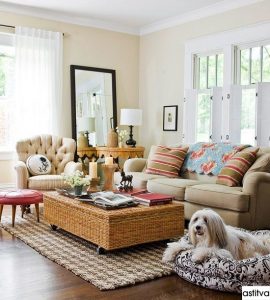
In terms of contemporary style, whatever is current in home decor fits the bill. You can achieve this look by using neutral colors such as cream, grey, black, and white. To draw attention, play with the colors in curtains, cushions, etc.
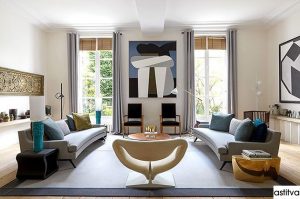
In formal home decoration, one central piece commands all of the attention. Shiny wood, luxurious fabric, and highly polished metal are used in this style. The room must have high ceilings and large, tall windows to accommodate this style of decor.
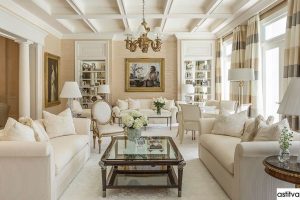
Balance Keeps Us Happy
Interior design is about so much more than a sense of style. Even the way you use symmetry in your home affects your mood. You should be very familiar with the concept that well-designed spaces can inspire happiness. We’ve all felt the rush of joy that comes with deciding on the perfect color to make our colorful interiors truly pop.
Some people have a natural eye for design and understand the importance of balance in their home decor. Others may require assistance when designing the interior of their home. Learning how to apply a few basic design principles to achieve balance can help these people create a sense of stability and wellness in their homes.
What is Balance?
Balance in interior design refers to the distribution of visual objects within a space to achieve a sense of equilibrium. Shape, size, texture, and color are all important factors to consider in this practice.
Types of Balance in Home Décor\
Symmetrical
Asymmetrical balance in home decor is achieved by dividing the room in half with an imaginary line and placing mirror images of the chosen decor on either side of that line. Using symmetry in home decor creates an environment that reduces the amount of visual processing required by the brain and promotes relaxation. Like you can use similar curtains or cushions on both sides.
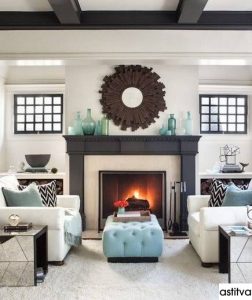
Asymmetrical
Asymmetrical balance is achieved by arranging objects with the same visual weight but different shapes, colors, or textures in a room opposite each other. For example, on one side of a wall, place one large framed picture and two smaller ones that equal the overall weight of the large one. Asymmetry adds visual interest to the home while also fostering a sense of authenticity.
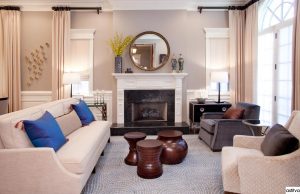
Radial
Radial symmetry is achieved by focusing on a single point in the room and balancing objects in a circle around it. All design elements radiate from the focal point, which draws the viewer’s attention. A round dining room table with all of the chairs and other decorative objects arranged around it is an example.
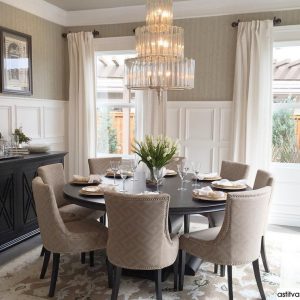
Tips for Balanced Design
Now that the principles of balance have been established, it is time to discuss how to put them into practice. There are specific steps that can be taken to achieve the best design for each room in one’s home. Here are some pointers on how to actively apply these principles.
Use Odd Numbers
The rule of odd numbers is the best way to achieve asymmetrical balance in a room. The idea behind the rule is that groups of odd-numbered objects or images create more visual interest than groups of even-numbered objects or images. Use three cushions of varied sizes and colors, and thoughtfully place two on one end of a couch and one on the other.
Find the Focal Point
The feature of a room that is most wanted to be highlighted is the focal point. This can be anything from a table runner to a designer rug to a piece of furniture. If a person is having trouble deciding how to decorate a room, locating a focal point that they want to highlight will assist them in starting the design process.
Take Measurements
There are measurement principles that must be followed if one wishes to have an artistically designed living space. These include leaving 15″ of space between a coffee table and the couch, leaving 3″ of overlap between the edge of a window and the edge of a curtain, hanging wall art at a center-eye level, and leaving 12-18″ of space around the edge of a floor rug.
Consider Lighting
Because lighting is such an important component of good interior design, one should be deliberate about the type of lighting they prefer. Ambient lighting is light that is soft and illuminates an entire room. Accent lighting is used to draw attention to a specific item, such as a photograph. Task lighting, such as a desk lamp, is intended for a specific purpose.
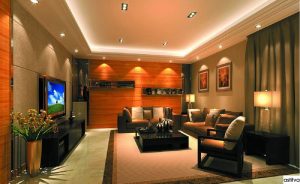
Final Considerations
There are few things more enjoyable than relaxing in a well-designed living space. With the proper design principles and a sound understanding of how to apply them, one can create a stunning and comfortable home that they will enjoy for years to come.
At Astitva Homes, our experts will guide us to create a perfect balance and hierarchy between home decor and furnishing. No worries anymore just connect with us and give your home comfortable, stylish, and affordable furnishing.
Archives
Categories
Popular Posts
-
December 22, 2021
Home Furnishing – An Important Need For Your House Interiors
-
January 24, 2022
Beauty of block prints in India
